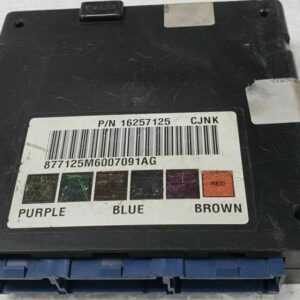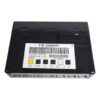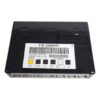Are you battling frustrating electrical gremlins in your GMC Safari or GM truck? Flickering interior lights, a security light that won’t turn off, or power windows and locks with a mind of their own are classic signs of a failing Body Control Module (BCM). As a technician with over two decades of experience, I’ve seen how a faulty BCM can make a perfectly good vehicle feel unreliable. This isn’t just an annoyance; it can affect vehicle security and safety systems. You need a solution that’s both dependable and straightforward.
This is your permanent fix. We offer a professionally prepared Body Control Module that arrives at your doorstep programmed specifically for your vehicle. Simply provide us with your Vehicle Identification Number (VIN) after purchase, and we’ll flash the module with the latest GM software updates. This critical step ensures seamless communication with your vehicle’s other electronic systems, eliminating the need for an expensive trip to the dealership for programming. This is the direct, cost-effective solution to restore your vehicle’s functionality and your peace of mind.
Case Study: A Tricky Diagnosis
A customer brought in a 2000 GMC Sierra with a complaint that stumped a few other shops: the radio would randomly turn off, the dome light would flicker while driving, and occasionally, the truck wouldn’t start, showing only a security light. They had already replaced the battery and alternator. My diagnostic process pointed towards a network communication failure. Instead of just throwing parts at it, I monitored the data stream from the BCM. I saw erratic voltage readings and intermittent data packet loss—the tell-tale digital signature of a failing module. Replacing the BCM with a correctly programmed unit, like this one, solved all the issues instantly. It’s rarely the battery in these cases; the BCM is the true culprit.
Is Your Vehicle Showing These Symptoms?
A failing BCM can cause a wide range of confusing electrical problems. If you’re experiencing any of the following, this module is the likely solution:
- ✔ Intermittent or non-working power windows, door locks, or mirrors
- ✔ Erratic or flickering dashboard lights and gauges
- ✔ The security or anti-theft light stays on, preventing the engine from starting
- ✔ Horn honks unexpectedly or doesn’t work at all
- ✔ Interior lights do not turn on/off correctly with the doors
- ✔ Communication Diagnostic Trouble Codes (DTCs) like U-series codes stored in other modules
A Straightforward Guide to BCM Installation
Replacing the 2000 Safari BCM is a job most DIYers can handle with basic tools. The module is typically located under the driver’s side of the dashboard.
- Safety First: Always disconnect the negative terminal from your vehicle’s battery before starting any electrical work.
- Locate the BCM: On most compatible models like the Safari, Astro, Sierra, and Silverado, the BCM is found on the left-hand (driver’s) side of the dash, often near the steering column. It’s a black plastic box with several large electrical connectors.
- Remove the Old Module: Carefully unplug all electrical harnesses from the original BCM. The connectors have locking tabs that need to be depressed. Once unplugged, unbolt or unclip the module from its mounting bracket.
- Install the New Module: Mount your new, pre-programmed BCM in the same location. Securely plug in all the electrical connectors, ensuring they click into place.
- Reconnect and Test: Reconnect the negative battery terminal. Turn the key to the ‘On’ position and test all body functions—windows, locks, lights, wipers, and radio—to confirm the repair.
Post-Installation Procedures
Because this module is pre-programmed, most vehicles will be ready to go. However, in some cases, a vehicle’s specific configuration may require one of the following synchronization procedures:
- Airbag System Sync: If your airbag warning light is illuminated after installation, a professional scan tool is needed to perform the “Setup SDM Primary Key in BCM” procedure. This syncs the new BCM with the airbag system.
- Brake Pedal Position Relearn: On certain models, a brake pedal position sensor recalibration might be required to ensure correct brake light operation and to satisfy the traction control system.
Disclaimer: Vehicle systems vary. We always recommend consulting a factory service manual or a certified technician if you are unsure about any step.
Verified Vehicle Compatibility
This BCM is a direct replacement for part numbers 09366801, 19153625, 16257125, and others listed in the product details. It is guaranteed to fit the following vehicles:
- 1998-2000 Chevrolet S10 / GMC Sonoma (ID 16257125)
- 1998-2000 Chevrolet Blazer / GMC Jimmy (ID 16257125)
- 2000 GMC Safari
- 2000 Chevrolet Astro
- 1999-2000 Chevrolet Silverado 1500 / 2500
- 1999-2000 GMC Sierra 1500 / 2500
- 1999-2000 Isuzu Hombre
- 1998 Oldsmobile Bravada (w/ extended build date opt ZN4)
Frequently Asked Questions
Do I need to get this BCM programmed by a dealer?
No. We program the module to your vehicle’s VIN before shipping it. This saves you the time, hassle, and expense of a dealership visit. It’s designed to be a plug-and-play solution.
Is there a core charge for my old part?
Absolutely not. There is no core charge on this BCM. You can keep your original module without any extra fees or need to return it.
What is a VIN and why do you need it?
The VIN (Vehicle Identification Number) is a unique 17-digit code for your vehicle. It allows us to access the specific factory software and settings for your truck or van, ensuring the new 2000 Safari BCM works perfectly with your existing options.
What do I do if my airbag light comes on after installation?
An airbag light is uncommon but can happen. It means the new BCM needs to be electronically ‘introduced’ to the airbag’s computer (SDM). This requires a professional-grade scan tool to perform the ‘Setup SDM Primary Key in BCM’ function, a quick procedure for any professional mechanic.
Where is the BCM located on my 2000 GMC Safari?
On the 2000 GMC Safari and Chevrolet Astro, the Body Control Module is located under the dashboard on the driver’s side (LH dash).



